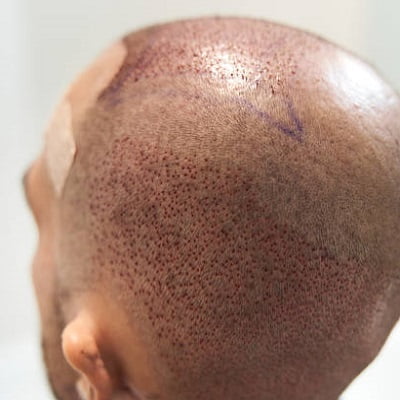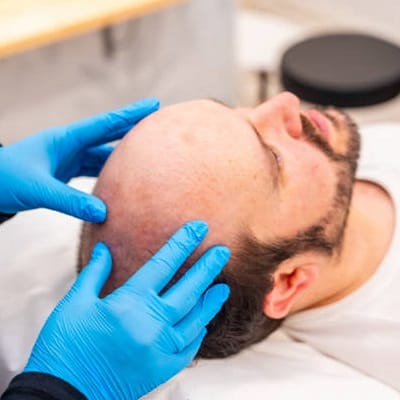
Hair loss is a common concern affecting millions of people worldwide, causing physical changes and emotional distress. Fortunately, hair transplant in Islamabad has emerged as an effective solution to combat hair loss and restore a full head of hair.
When considering a hair transplant, one of the key factors to focus on is achieving maximum hair density, as it plays a pivotal role in determining the naturalness and success of the procedure. This comprehensive guide will explore the steps you need to take to ensure a successful hair transplant with maximum density.
How to Understand Hair Density?
Hair density refers to the number of hair follicles per square centimeter of the scalp. It significantly determines your hair’s overall appearance and coverage—higher hair density results in a fuller and more youthful look. Achieving maximum hair density during a hair transplant is essential for a natural and satisfying outcome.
Factors Affecting Hair Density:
Several factors can influence hair density, including genetics, age, hormonal changes, and medical conditions. However, during a hair transplant, you can regain a significant portion of lost hair density by carefully planning and executing the procedure. Here are the key factors that impact the success of your hair transplant:
- Choice of Surgeon: The experience and expertise of your surgeon are paramount. An experienced and skilled surgeon will ensure the grafts are harvested and transplanted precisely, maximizing hair density.
- Donor Area: The donor area, typically the back or sides of your scalp, is crucial for a successful hair transplant. It should have sufficient healthy hair follicles available for harvesting without causing noticeable thinning in the donor region.
- Graft Quality: The quality of grafts extracted from the donor area is crucial. Single-hair follicular units yield the most natural-looking results and higher density.
- Graft Placement: The angle, direction, and density at which the grafts are implanted play a significant role in achieving a natural look. The surgeon’s artistry in recreating natural hair patterns is essential.
- Recipient Site Preparation: Proper preparation of the recipient area is crucial to ensure that it can accommodate the transplanted grafts and promote their growth.
Optimizing the Donor Area:
The donor area is the source of hair follicles for the transplant. Ensuring its health and integrity is essential for achieving maximum density. Here’s how to optimize the donor area:
- Assessment: Your surgeon will assess the donor area to determine the availability of healthy hair follicles. They will ensure that harvesting grafts won’t result in noticeable thinning.
- Donor Hair Characteristics: The quality of donor hair is critical. The hair in this region is typically more resistant to balding and should provide long-lasting results.
- Hair Follicle Preservation: Modern techniques, such as Follicular Unit Extraction (FUE) and Follicular Unit Transplantation (FUT), are designed to minimize scarring and preserve the integrity of the donor area.
- Graft Extraction: Depending on the chosen technique, the surgeon will extract grafts carefully, ensuring minimal follicle damage. The grafts should be healthy and intact for transplantation.
Maximizing Graft Quality:
The quality of the grafts used in the transplant is a critical factor in achieving maximum hair density. Here’s how to ensure the best graft quality:
- Single-Hair Follicular Units: Single-hair follicular units are ideal for creating a natural look and maximizing hair density. Skilled surgeons can separate multi-hair grafts into individual units.
- Microscopic Dissection: Using high-powered microscopes during graft preparation ensures that grafts are dissected accurately, preserving their integrity.
- Follicle Viability: Maintaining the viability of the grafts is essential. Grafts should be kept in a suitable storage solution and handled carefully to prevent damage.
- Graft Preservation: Grafts should be transplanted as soon as possible after extraction to minimize the risk of grafts drying out or becoming damaged.
Precise Graft Placement:
The way grafts are implanted plays a crucial role in achieving maximum hair density and a natural appearance:
- Angle and Direction: The surgeon should carefully consider the angle and direction at which the grafts are implanted. It mimics the natural growth pattern of your hair.
- Dense Packing: Careful planning allows for dense packing of grafts in the recipient area, maximizing hair density. However, over-packing should be avoided, as it can hinder graft survival.
- Front Hairline Design: The surgeon’s artistic skill is evident in designing a natural-looking front hairline. It should be age-appropriate and match your facial features.
- Customization: Each patient’s hair loss pattern is unique. A skilled surgeon will customize the graft placement to match your specific needs.
The Bottom Line!
A successful hair transplant with maximum density is achievable with careful planning, the right surgeon, and proper aftercare. Remember that the key to a natural and satisfying outcome lies in the skill and experience of the surgeon, the quality of the grafts, and precise graft placement techniques.
If you’re considering a hair transplant, take the time to research and choose a qualified surgeon at SKN Cosmetic Clinic Islamabad who specializes in hair restoration. With the right approach, you can regain your confidence and enjoy a full head of hair again.



